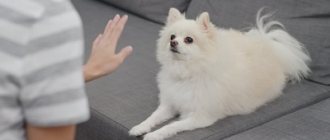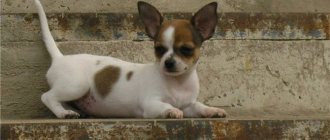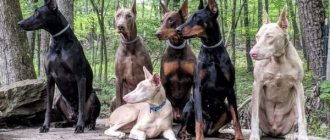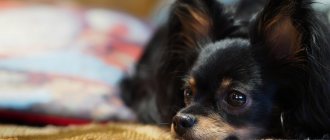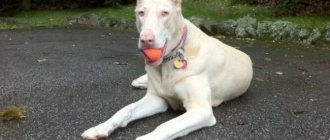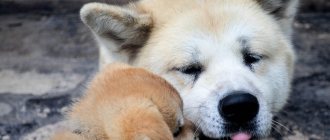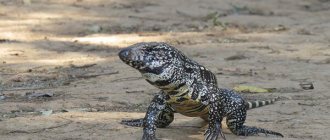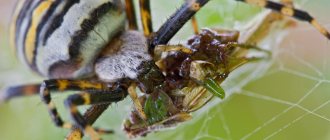The Basenji or Congo Terrier is one of the oldest dog breeds. She is one of the few that appeared without human intervention. The main feature is that the dogs hardly bark. Communicates with Basenji humans using snorts, sighs and other quiet sounds. This is a born hunter, a faithful companion to an active owner. This unique dog has many advantages. But this does not mean that he is better than other pets. The Basenji has a complex character, an independent disposition and an active temperament. Not everyone can cope with raising such an animal. Therefore, you need to study the description of the breed, the pros and cons, and reviews of the owners. Photos show what a Basenji looks like:
- Breed standard
- Education and training
- Feeding
History of the origin of the breed
The Basenji, or Congolese forest dog, has a 5,000-year history that began in central Africa. More than one legend and parable is associated with it. Archaeologists find images and burials of dogs of this breed in Egypt (in pharaonic tombs), Sudan (ancient Nubia). In Zaire, to this day they go hunting with Zande dogs (another name for the breed).
The Basenji first came outside Africa only in 1895: they were taken to England, but they died there. Ten years later, they settled in the Berlin Zoo as exotic dogs, and in the 1930s they again came to England, where the breed was described and its standard was adopted. 1937: dogs are already exhibited at American exhibitions under the name “Congo Terrier”.
It has been found in Russia since the end of the 20th century, but rarely. The African Bush Dog developed as a breed without the participation of humans.
Characteristics of the dog
The dog has a rather complex and independent character. Its temperament has developed independently over several thousand years, making it a very capricious breed. As a pet, it is suitable for experienced and strict people who are ready to devote most of their time to education. The future owner may encounter the following problems:
- The Basenji is an explorer and stalker. The ancient hunting instinct is still active and the dog can easily pick up the scent;
- Representatives of this breed are independent and willful. As a rule, they make all decisions independently, often not to please the owner;
- Dogs are naturally active. Quiet walks are completely unsuitable for them;
- communication problems. Due to some features, other dogs may misinterpret the Basenji's signals, which can lead to conflicts;
- fearlessness. Dogs are brave and capable of standing up for themselves. In addition, they show aggression towards those who, in their opinion, pose a threat and danger.
If the owner does not pay attention to his pet for a long time, the Basenji begins to entertain himself.
A bored pet may run away from the property in search of adventure or waste energy running around and making noise in the apartment. In good hands, this is an affectionate, calm and friendly pet. They are kind to family members but cautious to strangers. They are characterized by cleanliness - dogs take care of themselves. Their distinguishing feature from other breeds is that they wash themselves with their paws, just like cats do.
Description of the breed
Basenjis are medium-sized active dogs with a lean, elegant, aristocratic appearance. They move easily and beautifully, stride widely, quickly pick up speed, and require plenty of space to roam away from roads.
Available colors: red and white, brown and white, black and white, tricolor, brindle (black stripes on red). The tip of the tail, paws and chest are always white. The colors are bright, the boundaries between them are clear. There should not be more white than other colors.
There are two varieties of the breed: plains and forest Basenjis. The first large ones: height at the withers of females 40 cm, males 43 cm; live weight: females 9.5 kg, males 11 kg. The latter are brighter, but small, for which they received the nickname “pygmy dogs.” They live about 14-16 years.
Interesting Facts
- Dogs have been around for a very long time, as evidenced by Egyptian myths. The first illustration of the breed was found in the tombs of the Great Pyramid of Khufu. Pictures of pets are depicted on billboards and walls. There are even some mummified Basenjis.
- The Metropolitan Museum of Art in New York has a Babylonian bronze statue of the Basenji and his owner.
- The breed is classified as a size 30 animal. This is evidenced by the girth of the neck and chest: 28-30 centimeters and 40-44 centimeters, respectively.
- In Kenya, the animals are used to lure lions out of their caves. Hunters take about four dogs at a time to find lions and drag them outside.
- People in the Ituri rainforest called these animals "basenchi", which means "small bush".
- This breed got its name around 1936 from an English resident, Mrs. Burn.
- In earlier times, Basenjis were considered a royal gift.
- Like greyhounds and hounds, they use a double gallop when running. When most dogs run, at least one foot touches the ground. But in galloping breeds such as the Basenji, there are two distinct times when all four paws are off the ground. This feature helps the dog achieve impressive speeds.
- Pets keep their fur and paws clean on their own, just like cats. Therefore, they are easy to care for.
- These animals may be afraid of the dark.
- Some people do not know that the emphasis in the name of the breed should be placed on the first syllable - bAsenji.
- If you want to choose a quiet and almost voiceless dog, also consider breeds such as the American Akita and Shiba Inu.
- If you dream about a Basenji, expect to hear from your friend.
Breed standard
According to the Fédération Cynologique Internationale classification, Basenjis belong to the group “Spitz and primitive breeds.”
Head:
- the size is small, the muzzle is slightly narrowed, shortened,
- nose with a black lobe, small, narrowed,
- ears are erect, pointed, tilted slightly forward,
- the eyes are almond-shaped, dark (the forest variety has a darker iris than the plain variety), the look is intelligent,
- scissor bite,
- folds on the forehead, especially noticeable in puppies or when the dog pricks up his ears.
Torso:
- graceful, high neck,
- the chest is deep, medium, smoothly transitions into the stomach,
- the back remains straight when running,
- the tail is twisted into one or two rings, pressed to the croup.
Legs:
- long but strong
- the front ones are slightly turned inward,
- rear with well-developed muscles.
Tail
The tail is set very high, giving a special appearance to the hind legs. Forms a tight ring, the tip of the tail lies close to the back. The ring can consist of one curl or two. The tip may be positioned on the thigh.
Limbs
The forelegs are straight, the bones are thin. The hindquarters are strong and have well-developed muscles. The paws are located perpendicular to the ground, small, with small claws. When gait, the limbs are carried straight forward, providing long and rhythmic movements.
Coat
The coat is short and smooth, lying close to the body. The structure of the hairs is very thin. The breed is hypoallergenic, but sheds a lot. According to the standard, several types of color are allowed - one-color (black), two-color (black or red and white) and three-color (black and tan or brindle with white) suits with white markings. White should be on the paws, tip of the tail and chest, while it is optional on the neck and belly.
Character and behavioral characteristics
Basenjis are not quiet dogs at all. You won't hear them bark, but in moments of excitement (joy or alertness) they can howl, hiss, snort and even yodel. Among their unusual skills are the ability to climb trees, smile, cry and wash themselves like a cat. They get along well with other animals, especially those they have known since childhood. They are affectionate with the owner, distrustful with strangers.
The non-barking Congo Terrier is suitable only for experienced dog breeders due to its stubborn nature and constant readiness to satisfy curiosity and run after someone without hearing the owner’s cries - a characteristic of a hunter.
It is better not to leave these dogs with small children for a long time: although the animals are friendly, they are independent and will not allow their ears and tail to be pulled with impunity.
Basenjis need long walks, active exercises and emotional games with their owner, otherwise they will find their own entertainment, and most likely it will be something destructive.
Why don't they bark?
The Basenji is the only dog that does not bark. Why can't they bark? This is due to the fact that the breed has a flat larynx. If you think that this is a silent pet, this is not true at all. The peculiar “barking” of dogs varies from cheerful sounds called yodeling to mesmerizing screams. They growl, whine and whine, howl, and sing, just like other dogs. Sometimes it's impossible to listen to.
Education and training
Start training your pet as early as possible, because stubborn Congo Terriers are already difficult to train, and if you start this matter at the beginning, later the dog may not accept training. For example, if a Basenji is not taught to walk side by side in puppyhood, you cannot let an adult dog off the leash - it is fraught with a sudden escape.
These are smart, independent animals and cannot be forced into anything. Pain and screaming can easily break the thin thread of trust with your pet. But justice, love and patience make them affectionate, devoted companions who know their commands and can make independent decisions. Basenjis are active, but dog sports are not for them: just obedience is already a great achievement.
What a pet should be able to do first of all:
- react (stop, return) to your name: can save the life of a dog walking near the roadway;
- do not pick up anything on the street: the instinct of a getter makes them pick up anything from the ground;
- do not sleep in the master’s bed: Basenjis like to lie down higher;
- commands “come to me”, “nearby”: important commands, since these dogs tend to run away, ceasing to hear the owner.
Useful tips for Basenji owners
The ancient Basenji dog breed has a large number of features, so tips on keeping and training from experienced dog handlers boil down to:
- Building a trusting relationship with a pet without aggression from the owner.
- Dogs are very stubborn and willful, so it is important to teach them commands, especially returning on demand, from early childhood. Otherwise, the pet will simply run away at the sight of a pigeon, bicycle or car.
- The hunting instinct prevails in animals, so it is important for them to run at least 2 hours a day in the fresh air. Without walks, a Basenji dog will find entertainment at home that the owner will definitely not like.
- In addition to physical activity, your pet needs to be occupied intellectually by learning new commands and tricks at home.
- Such dogs are prone to overeating, so the portion should be dosed.
- Pets love warmth, especially in cold weather, so either the dog will try to sleep with the owner on the bed, or he needs his own warm and soft place to sleep.
Diseases and care
Dogs of this breed have short, shiny hair without undercoat, which means it is very easy to care for (brush once a week), and shedding is very moderate. Bathing Basenjis is a big challenge as they don't like water. If your dog is very dirty, simply wipe it with a damp towel. Clean your ears and eyes with damp cotton pads or swabs. File your nails twice a month.
Content
Congolese forest dogs must live indoors (house or apartment) - they are a southern, heat-loving breed; For winter walks, buy warm dog clothes. This breed is natural, so it has a strong immunity to canine diseases.
Tendency to diseases
Kidney diseases:
- Fanconi syndrome is a kidney failure caused by genetics. The dog drinks a lot and walks around small, it is underweight, myalgia, over time, failure of all organs develops, and death occurs. Appears at the age of 5-7 years. With early diagnosis (urine and blood tests for glucose), replacement therapy is effective, with late diagnosis it is complex and does not always bring the desired result.
- Urolithiasis is the formation of uroliths in the kidneys, blocking the ureters. It is difficult for the dog to walk small and large, it hurts, there is blood in the urine; The animal has lethargy and anorexia. In the severe stage, intoxication, convulsions and death occur. Sick Basenjis are prescribed a lifelong therapeutic diet that will prevent new stones from forming.
Digestive tract diseases:
- Protein-losing enteropathy (PLE) is the leakage of proteins through the stomach wall. The reasons are any diseases of the gastrointestinal tract. Patients with Basenji experience exhaustion, diarrhea, vomiting, anorexia, ascites, and swelling of the paws. To prevent the disease, avoid injury to the walls of the stomach (tubular bones), identify and treat gastrointestinal infections in a timely manner, and regularly treat for worms.
Eye diseases:
- Progressive retinal atrophy (degeneration) (PRA) is a genetic disease (autosomal recessive inheritance), manifested by night blindness, tunnel vision, and then complete blindness. Most often occurs at the age of 5 years. It is diagnosed in advance in puppies using a DNA test. There is no treatment; the owner can help the dog compensate for lost vision. Patients are not allowed to be bred; their parents, brothers and sisters are examined.
- Cataract is a clouding of the eye lens that progresses quickly or slowly to complete blindness. Gene testing in puppies makes it possible to identify animals at risk in advance.
Breeding
Girls come into heat at the age of 7-8 months. It is noteworthy that in this breed it occurs only once a year: in the autumn-winter period. Therefore, the easiest time to buy a puppy is in the spring. Dogs are bred when they reach the age of one and a half years.
Mating is planned in advance. Both parents are prepared for it: they check their health, feed them a balanced protein diet, and introduce them to each other.
The female's pregnancy lasts 56-73 days. Signs of pregnancy appear towards the end of the first month. These include pet lethargy, drowsiness, but good appetite. Be sure to feed your dog high-quality food that is rich in vitamins and minerals.
Ensure that a veterinarian is present at the birth. Especially if they are the first. A specialist will help in case of unforeseen circumstances.
Normally, 2-3 puppies are born. Although there have been cases when 10 babies were born at one time.
Feeding
Do not overfeed Basenjis: they are prone to obesity.
Determine the dog's condition by looking at the ribs: if they stick out, the pet is underfed; if they are not visible or palpable, the pet needs a diet.
Buy ready-made complete feeds of premium and super premium classes. Base the basenji's natural diet on lean raw meat (1/3-1/2 of the daily portion) and buckwheat (rice) groats. Barley porridge is moderately useful for them, but not every day; Oatmeal is harmful for those prone to urolithiasis.
Fish and meat by-products are allowed in small quantities.
Vegetables, herbs, eggs, sour milk - those that are allowed for dogs - are required. Eliminate sour fruits; everything else is ok, but little by little.
Do not salt the food of African forest dogs because of their predisposition to kidney diseases. Bones can be given no more than once a week, but only hard ones that dogs cannot chew and injure their stomach and intestines.
What not to give to a Basenji
- fatty meat and broths made from it (excess of the world will overload the liver),
- sausages (salt, preservatives and other additives will “hit” the liver and kidneys),
- river fish, especially raw (bones and helminths injure the walls of the stomach and intestines),
- tubular and boiled bones (injuries and blockage of the digestive tract),
- chocolate (the liver and pancreas suffer from theobromine and caffeine),
- grapes, raisins (toxic to dogs),
- onion, garlic (sodium thiosulfate provokes anemia; against helminths you can give no more than one garlic clove per day),
- potatoes (dogs cannot digest starch, and oxalates will negatively affect the pancreas and kidneys),
- stale, rotten, sour.
What to feed
The puppy's feeding rate is set by the breeder, but by the age of one, an adult dog is fed strictly 2 times a day. In the case of the Basenji, indulgences are unacceptable, since the breed is prone to begging and capriciousness. The diet can be formulated either on a natural basis or consist entirely of dry food.
If the owner decides to prepare food for his pet on his own, he should include in the menu foods that contain all the necessary substances and vitamins to maintain the dog’s health. As a rule, they cook porridge with it with the addition of finely chopped lean beef, or less often chicken. Periodically, the pet is given boiled vegetables and fermented milk products. Some individuals willingly eat fruits.
Basenjis are not fed table scraps. Fatty, sweet, salty and spicy foods are contraindicated for them. In addition, they are not given bones.
The selection of dry food is carried out using the selection method. This takes into account not only the pet’s taste preferences, but also its lifestyle, as well as its health status. It is advisable to ask the breeder about feeding standards, since even when feeding with ready-made food, it is recommended to give your pet natural products.
How to choose a puppy
Basenji litters contain no more than 4-5 puppies. Responsible breeders offer puppies for sale that are at least 1.5 months old. If they offer menstruation, be wary, and better not buy animals that are too young. The ideal age is 2 months: puppies already exhibit a unique temperament and character.
Basenji puppies are healthy if:
- mucous membrane of the mouth is pink,
- the bite is correct,
- nose, eyes and ears are clean,
- nose and eyes must be dark,
- normal body condition (neither thin nor fat).
Price and where to buy a puppy
The cost of a Basenji puppy depends on the class it belongs to, age, etc.
| Puppy class | Class characteristics | Cost, rubles |
| show | pedigree, permission to reproduce, best representatives of the breed | from 30000 |
| breed | pedigree, permission to reproduce, minor flaws in appearance, do not participate in exhibitions | from 25000 |
| pet | pedigree, prohibition of reproduction, significant defects in appearance, do not participate in exhibitions | from 15000 |
Basenji Kennels
- "Ituri Puzzle", Moscow,
- "Salonga", Moscow,
- "Angel of the Congo", Moscow,
- "Fox Glamor", Moscow,
- "Dog Aristocrat", Moscow,
- "African Silent Man", St. Petersburg,
- "Team Spirit", St. Petersburg,
- "Red Flower", Voronezh,
- "Namamba", Podolsk,
- "Dream of Congo", Ukraine,
- "Ex Silva Densa", Ukraine.
Choosing a nickname
It is better to call the Basenji short and sonorous, otherwise by the time you pronounce the long name, your dog will have time to run very far. Observe the pet’s character, its behavior, habits: perhaps your observations will help you come up with a nickname. Maybe you will like “African” words suitable for naming a dog.
| For bitches: | Pulka, Betty, Jess, Grace, Skoda, Dora, Evie, Rami, Bastet. |
| For males: | Reichik, Fox, Yasik, Ice, Harley, Simba, Ozik, Tory, Rich, Viho. |
Owner reviews
Larisa V.:
“I love these dogs very much. You could say I'm in love with them. I am not unfounded: these feelings are hard-earned, since I had to fight for a long time for the love and obedience of my Baska. A favorite Basenji saying is that when you bring a Basenji puppy into your home, you are doomed to love him for life. This, of course, is subject to a strong connection with her, if there is a common language. And it’s hard to find, that’s for sure.”
Svetlana A.:
“An impudent, proud, but very beautiful, sweet and strong dog. I dreamed of another dog since childhood, but I fell in love with my Basenji as soon as I first saw his photo. I couldn't resist."
Valery N.:
“I have had a red male for 5 years. Initially I chose him for his silence, he does not bark. Mine also knows how to look very smartly, shoot his eyes and wink. In short, this breed is only for those who have experience in communicating and raising (not service!) dogs, who are ready to sacrifice themselves, time and, often, things.”
Photo
Briefly about the main thing
- Basenjis are very active but quiet dogs that do not tolerate psychological pressure or physical punishment.
- Due to their Central African origin, the breed is heat-loving; in Russia, especially in winter, they are cold and need clothing.
- This is a beautiful, graceful breed with light, swift movements and independent, aristocratic behavior.
- They are fed food that is safe for the kidneys and digestive organs.
Which of our readers has a Basenji? Let's talk about them: temperament, feeding and care. Share your experience in the comments, please.
Did you like the article? Share it with your friends on social media. networks. This will help them get useful information and support our project.

